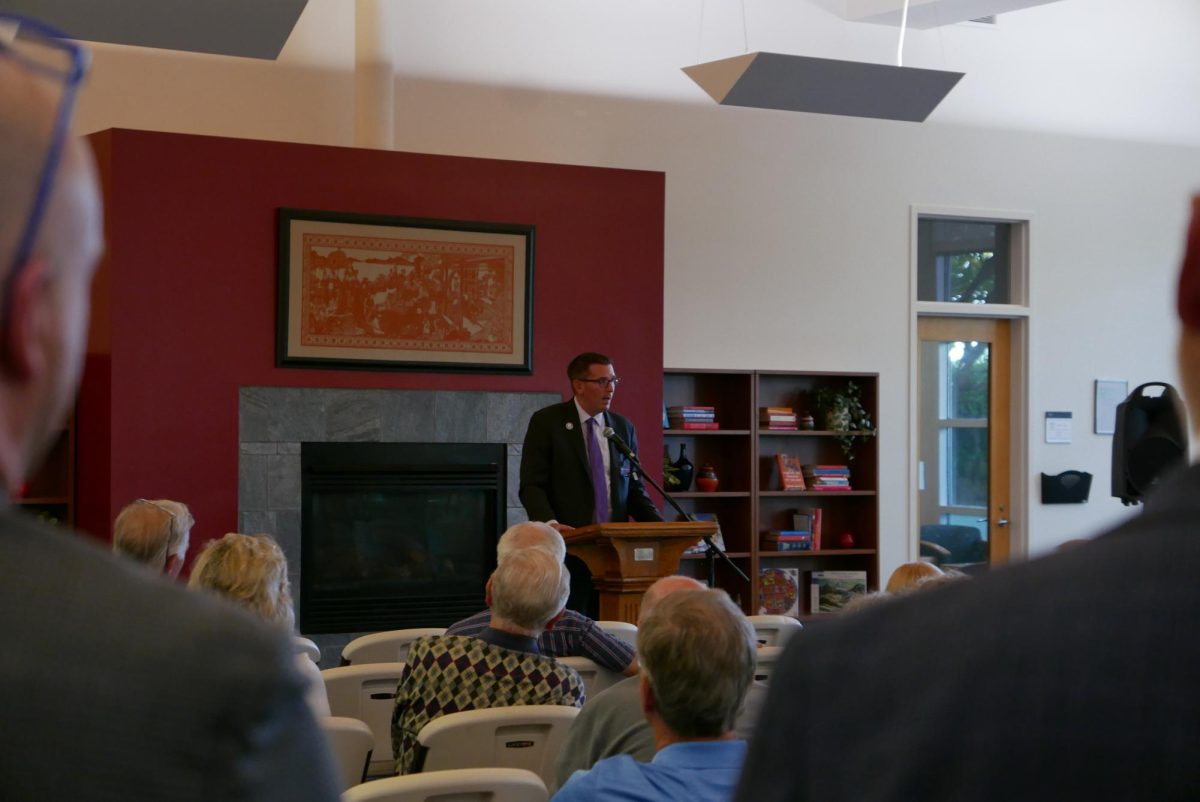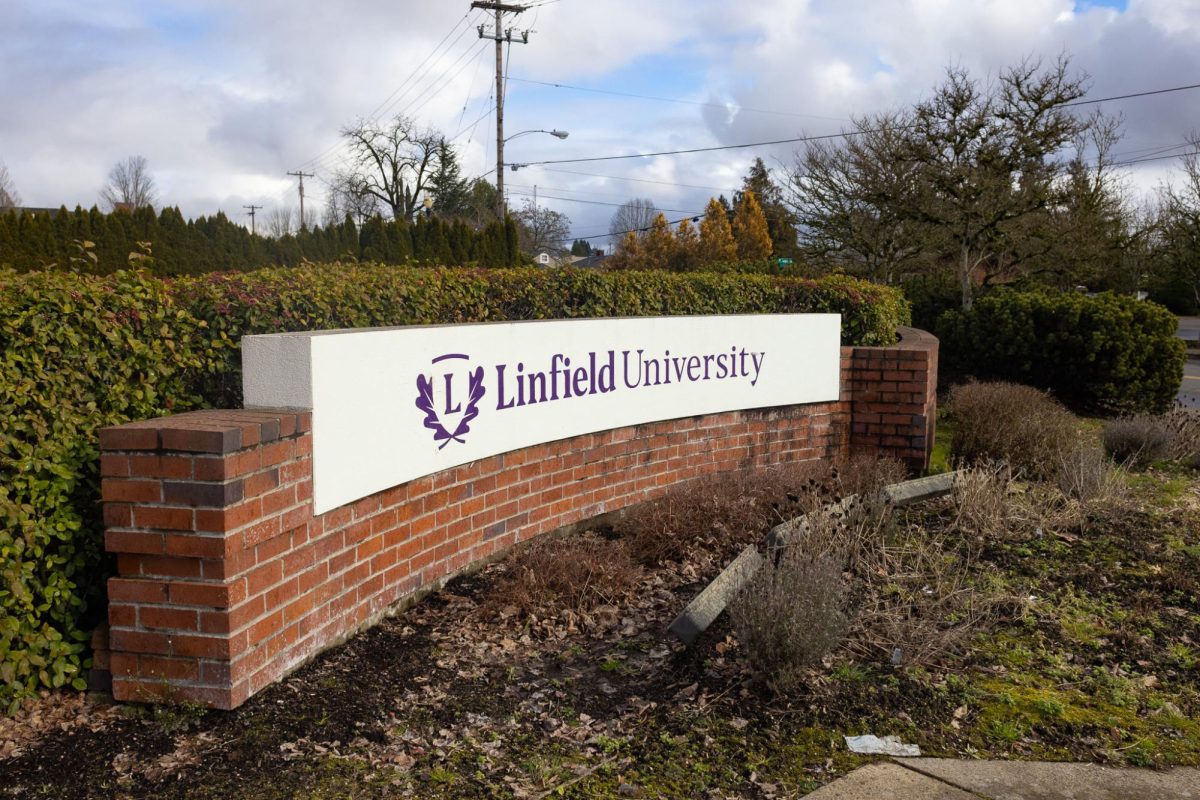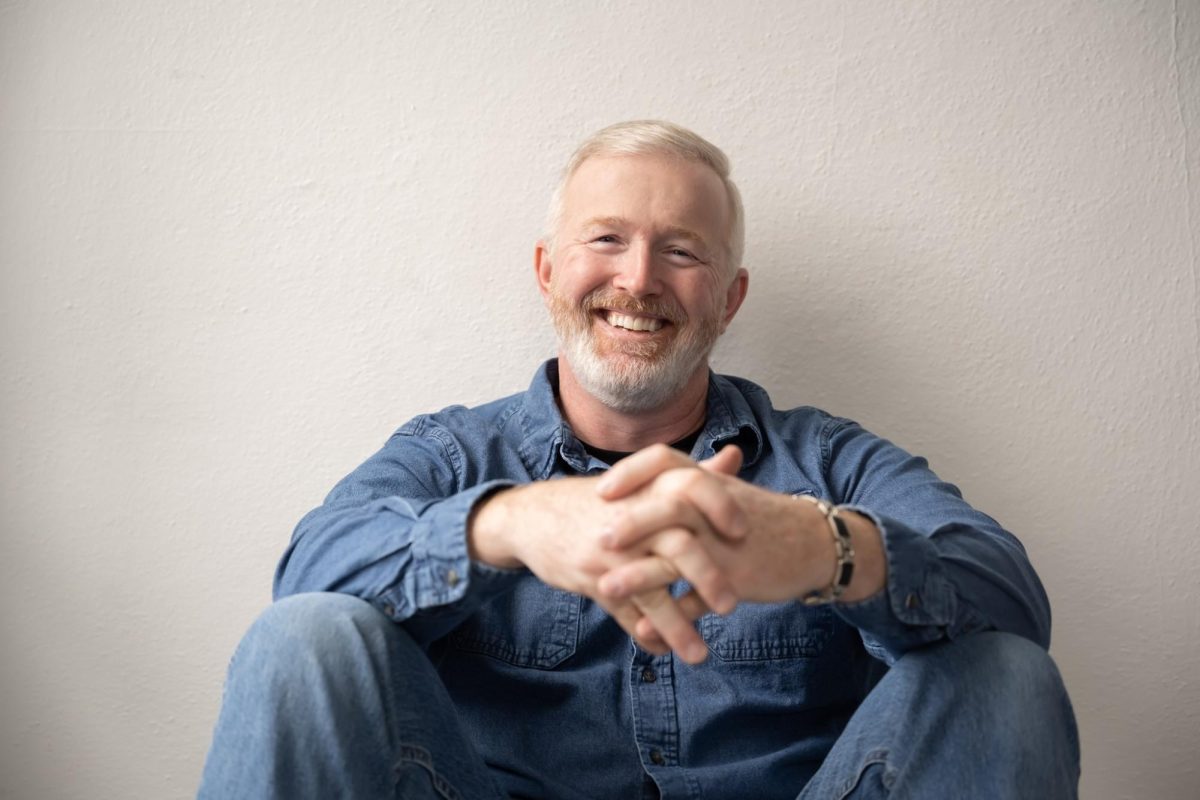“Consider the pickle,” Thor Hanson reads enthusiastically from his book, “Hurricane Lizards and Plastic Squid”, as he explains CO2 and its complex ties to climate change. Hanson’s focus however is not on the doom and gloom of a changing planet, it instead is about how animals continue to adapt and persevere even as their home becomes less hospitable.
Hanson breaks his book up into four parts, all of which he briefly covered at his Reading at the Nick presentation on Sept. 5. In section one, “The Culprits,” Hanson discusses the changing environment, experiments with pickles, Schweppes seltzer water and of course the one thing that ties these three subjects together, carbon dioxide. The point he made was that not all carbon dioxide is causing environmental problems, but fossil fuels which contain trapped CO2 “overwhelming the natural cycle,” when they are burned and reintroduced to the air, he said.
When discussing the second part of his book “The Challenges,” Hanson focused on what he called environmental mismatches. To explain this concept he used an anecdote about a specialized symbiosis between a flower and bee. Hanson told the audience about the death camas flower, also known as Toxicoscordion venenosum which means the poisonous bulb poisonous poisonous. A name Hason felt was both comedic and accurate.
He explained that this flower had developed a specialized relationship with the Andrena astragali or the death camas bee. This bee evolved an immunity to the flowers’ poisonous leaves and therefore had become the death camas’ only pollinator. However, due to the seasons getting hotter sooner, a timing mismatch has begun to occur. The death camas has begun to bloom earlier, while their bee counterparts sleep through the pollination periods. A trend that has Hanson worried for these two species as well as other species in similar situations.
The third part is where things begin to feel a little more positive, as Hanson discusses “The Result” of some environmental changes. As well as where readers finally get to learn the secret behind the title of his book. The section begins, as the title does, with the lizards. In a study done on lizard populations after hurricanes in the Caribbean, a colleague of Hanson’s found that the lizards that remained had larger toe pads on their front feet, and shorter back legs.
The species was evolving over a relatively short period of time to adapt to the increasing amount of hurricanes. Hanson was amazed and excited by the speed at which evolution could occur, and it was all thanks to selective breeding. However, this is not the only way animals can adapt and change with their environment, which is where the Humboldt squid comes into the discussion. Hanson explains that plasticity allows for changes within a species’ genetics without natural selection. When water temperature rose within the Humboldt squid’s habitat, the species size became drastically smaller.
“They matured and reproduced in half the time, ate different foods and lived half as long,” Hanson said.
This change gained them their place in the title as the plastic squid.
Hanson ended his argument by telling the audience the battle against climate change has not been lost, but as animals continue to adapt and change, humanity must too. He implored the audience, paraphrasing the words of Gordon Orians and Edward Everett Hale, “Do everything you can, you cannot do everything, but still you can do something.” A plea and a call to action for those in the audience and those reading his book, to not be idle when it comes to climate problems, that real change can only happen if everyone is doing their part.
Students are interested in this book, The Nicholson Library has been giving out free copies, just ask the front desk where to find them. If they are out, copies are available at 3rd Street books in downtown McMinnville.
Be sure to be on the lookout for the next Reading at the Nick on Sept. 27, with guest author Annie Lampman.







